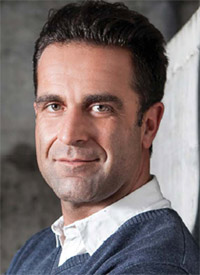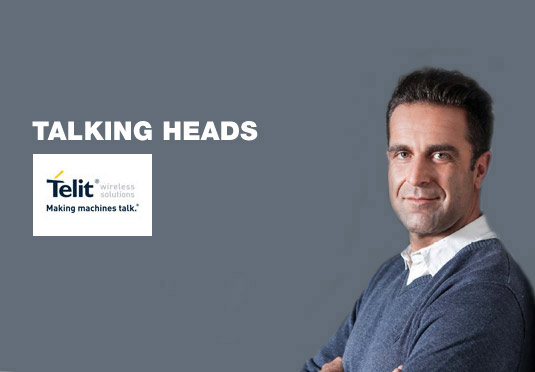For years analysts have touted mobile healthcare as a huge opportunity for those offering machine-to-machine communication (M2M) services. Truth be told, the progress so far has been patchy, at best. So M2M Now asked Alexander Bufalino, SEVP Global Marketing at Telit, to describe the hurdles in the way of M2M mHealth, how they are now being overcome and what the future holds.
M2M Now: What is stopping mobile health professionals from really embracing M2M?
 Alexander Bufalino: For the most part delivery models keep professionals from a broader embrace of M2M. This is a heavily regulated industry and healthcare providers the world over typically have to comply with norms and regulations from government agencies as well as payers – typically insurance companies. That makes adoption of anything new very complicated – not only M2M.
Alexander Bufalino: For the most part delivery models keep professionals from a broader embrace of M2M. This is a heavily regulated industry and healthcare providers the world over typically have to comply with norms and regulations from government agencies as well as payers – typically insurance companies. That makes adoption of anything new very complicated – not only M2M.
The most successful efforts with this particular M2M user community have been those sponsored, supported, or initiated by either governments or insurers. And that is why we are seeing some of the slowness in broader acceptance. Solution providers from outside healthcare with a higher comfort level integrating M2M, have a longer road ahead than established eHealth vendors to get their products and services properly certified and aligned with both groups. And those inside the healthcare industry feel differing degrees of intimidation when they look at the complexity of connecting their devices with M2M. These range from adding the proper module to managing the deployments under mobile networks and integrating them into the back-end systems with providers such as clinics and hospitals and with payers such as government agencies and insurers.
These professionals have used wireless technology for a long time. But it is nearly always within the four walls of their clinics and hospitals. Larger deployments that involve connecting outside these four walls have typically been wired solutions. And ‘cutting the cord’ on these systems is the first necessary step for the broader embrace.
This cord-cutting transition is starting to pick up pace now, with the advent of ‘one-stop shop’ delivery models from the M2M industry. One-stop shops remove differing degrees of barriers to adoption for solution providers for mHealth.
This is a necessary and important step because it allows these providers to test wireless M2M connectivity with systems already certified and working well on a wired basis. It provides this community the opportunity to focus on learning M2M with the safety net of the wired systems to fall back to.
One-stop shops also contribute the fastest rise in familiarity with the features and capabilities of M2M, accelerating new solution ideas from these professionals to the market.
What can be done by the M2M industry and other industries or groups to promote mHealth?
AB: As a provider of enabling technology, the M2M industry needs first to understand what constitutes a solution for mHealth. Telit, for example, has for a number of years, maintained internal organisations staffed with experts from the key verticals whose job it is to ensure we have all the proper certifications, services, and products to compose solutions for the different verticals.
Add that to the one-stop shop delivery model and now we are really removing enough risk from the adoption equation for mHealth to move.
Is there much waste and inefficiency in the healthcare space and, if so, can M2M help to eradicate it?
AB: Consider the case of medication compliance. Data shows that there are over 300 million chronically ill individuals in the US and Europe, with 60% of them having two or more chronic diseases. Medication compliance (which represents the fraction of chronically-ill patients keeping reasonably well to the medication regimen prescribed by their doctors) declines to 50% after six months from the diagnosis and start of treatment; and down to 33% in five years. Another important fact in this particular space of medication compliance is that the average chronically-ill patient takes over five medications daily.
So, as you view these rather bleak statistics, it is easy to understand why up to 90% of all health spending in these two regions goes towards treating chronic conditions, with 40% hospital readmissions due to lack of patient medication compliance. It is also easy to understand how much well-being can improve for chronically-ill patients and savings could be realised for governments, insurers and ultimately societies if M2M solutions could improve these numbers.
Vaica Medical, a Telit customer, is rolling out a bold solution for medication compliance improvement among chronically-ill patients (see Case Study on page S13 in the attached supplement). The clever device prompts the patient to take the prescribed medication at the proper time, alerting care-givers or doctors’ offices if the patient does not take them when prompted. Their next generation solution will support the use of blister packs prepared and supplied directly by the patient’s pharmacy which is also alerted when refills need to be prepared and/or delivered to the patient.
This is but one example of how inefficiency and waste can start to be removed from the space with bold new solutions from the intersection of expertise in the challenges facing the space and the uncomplicated offering from M2M one-stop shops.
Which application areas are likely to develop fastest in mHealth?
AB: As the developed world population ages, there is a strong focus on bringing solutions to market that improve quality of life for the independent-living elderly. The Vaica medical solution I mentioned earlier positioned squarely in that space as are great numbers of research and development efforts in industry and academia.
Take another example; the issue of falling and inability to get back up which hinders independent living for many seniors. Current solutions rely on the senior carrying and being able to activate a wearable panic button. Statistics show dismal success rate for this activation in cases of a fall, for a number of reasons. The University of Utah in the US recently published a paper showing encouraging progress in the development of a sensor that can detect an individual’s fall followed by extended stay on the floor. That sensor technology integrated in a connected device can restore confidence for the elderly and their families.
Which countries or regions are adopting mHealth most quickly, and how can others catch up?
AB: As I mentioned before, adoption rates have closely tracked the incidence of programmes and incentives by governments and payers. As a result we have seen broader scale adoption in the Nordic European countries than most other regions from such programmes as the Northern Periphery Program (NPP) started in 2007 which ran through 2013 followed by a successor programme from 2014 to 2020. These NPP programmes foster the competitive delivery of healthcare to sparsely populated areas which is a marked characteristic of this particular group of countries, with creative application of technology including (but not limited to) M2M.
Central Europe and the US will be able to look at these as cases studies and glean best practices in policy making as they develop their own programmes, even though these regions are challenged by much higher incidence of health issues – particularly with lifestyle diseases such as diabetes and hypertension coupled with much more uneven socio-economic make-up in their population than the Nordics.
But the US, Central Europe, and parts of the Middle East and APAC will definitely catch up soon since the sheer numbers in waste and inefficiencies are massive, as we demonstrated above. In the US, for example, hospitals and insurers have been pouring a lot of resources into R&D to shrink the duration of postprocedure stays in the hospital. With every day being charged to insurers at rates going from a few to several thousand dollars, every single day reduced in a patient’s stay in hospital translates quickly into billions of dollars of savings since the country is quickly approaching its one millionth hospital bed.
M2M technology has made great strides with commercial solutions for efficient and reliable monitoring of patients, essentially extending the reach of the post-op nurse station to the home. That trend is likely to remain strong for this fascinating segment which is just starting to discover M2M.
The author is Alexander Bufalino, senior executive vice-president (SEVP) Global Marketing at Telit Wireless Solutions, in charge of all aspects of brand, traditional, digital, above & below the line marketing. Alex is the mind behind telit2market magazine, and past finalist of the prestigious SABRE Awards. Alex joined Telit in 2005 leaving his post of sales director at Siemens AG, M2M division. He currently serves as one of five governors for the International M2M Council (IMC), which was started in 2013 to foster widespread M2M adoption across a diverse range of industrial and consumer sectors by bringing together solution providers and users of M2M technology globally.










